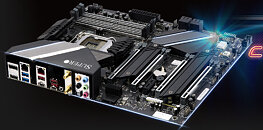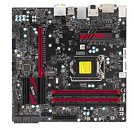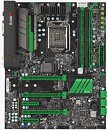
Samsung Introduces "Petabyte SSD as a Service" at GTC 2024, "Petascale" Servers Showcased
Leaked Samsung PBSSD presentation material popped up online a couple of days prior to the kick-off day of NVIDIA's GTC 2024 conference (March 18)—reports (at the time) jumped on the potential introduction of a "petabyte (PB)-level SSD solution," alongside an enterprise subscription service for the US market. Tom's Hardware took the time to investigate this matter—in-person—on the showroom floor up in San Jose, California. It turns out that interpretations of pre-event information were slightly off—according to on-site investigations: "despite the name, PBSSD is not a petabyte-scale solid-state drive (Samsung's highest-capacity drive can store circa 240 TB), but rather a 'petascale' storage system that can scale-out all-flash storage capacity to petabytes."
Samsung showcased a Supermicro Petascale server design, but a lone unit is nowhere near capable of providing a petabyte of storage—the Tom's Hardware reporter found out that the demonstration model housed: "sixteen 15.36 TB SSDs, so for now the whole 1U unit can only pack up to 245.76 TB of 3D NAND storage (which is pretty far from a petabyte), so four of such units will be needed to store a petabyte of data." Company representatives also had another Supermicro product at their booth: "(an) H13 all-flash petascale system with CXL support that can house eight E3.S SSDs (with) four front-loading E3.S CXL bays for memory expansion."
Samsung showcased a Supermicro Petascale server design, but a lone unit is nowhere near capable of providing a petabyte of storage—the Tom's Hardware reporter found out that the demonstration model housed: "sixteen 15.36 TB SSDs, so for now the whole 1U unit can only pack up to 245.76 TB of 3D NAND storage (which is pretty far from a petabyte), so four of such units will be needed to store a petabyte of data." Company representatives also had another Supermicro product at their booth: "(an) H13 all-flash petascale system with CXL support that can house eight E3.S SSDs (with) four front-loading E3.S CXL bays for memory expansion."












































